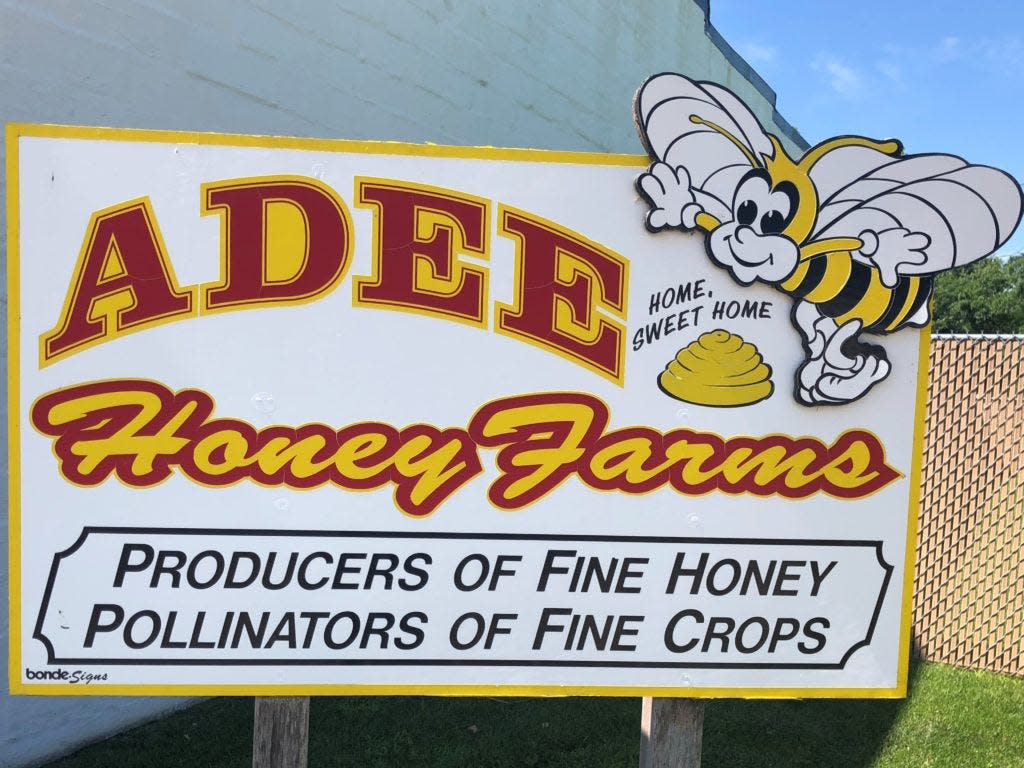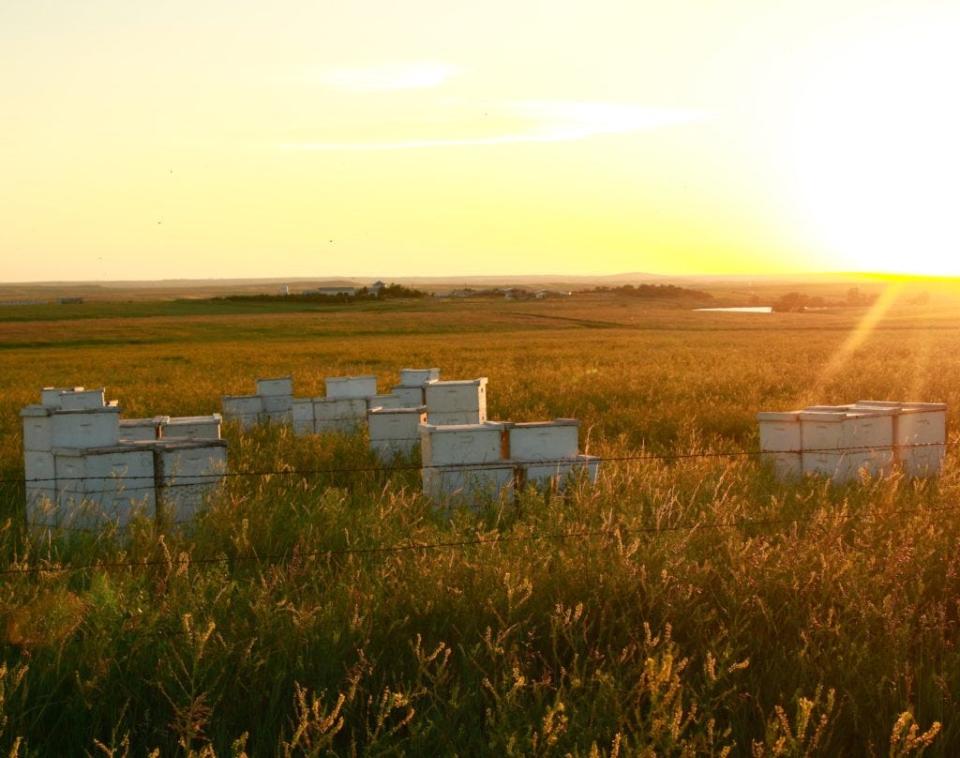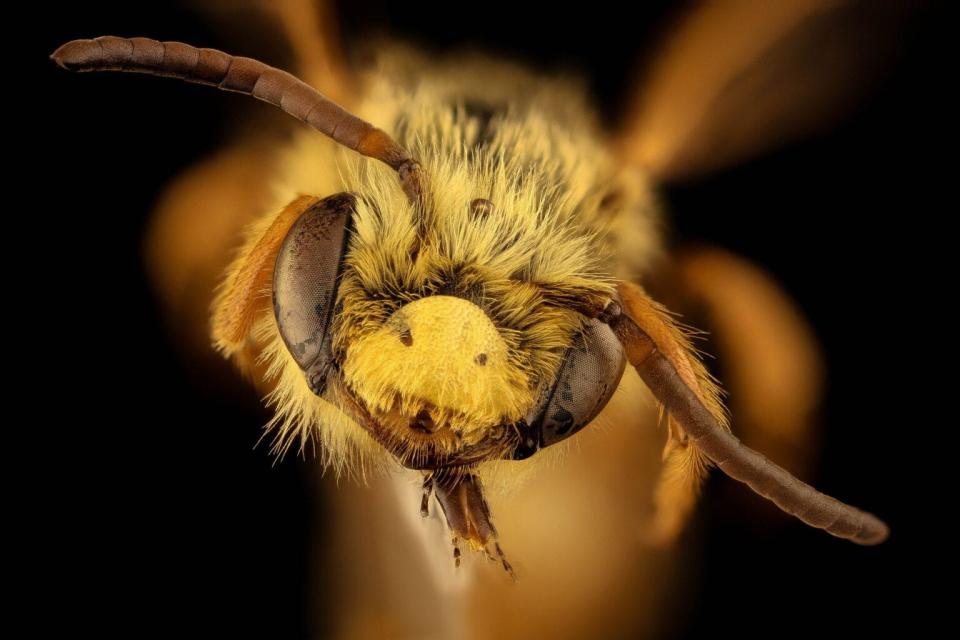South Dakota beekeepers fighting historically high loss of colonies, wild bees

For more than a decade, beekeepers in South Dakota and around the country have been fighting against historically high annual colony loss rates of more than 30%.
The continued loss of colonies has the potential to affect roughly 100 different agricultural crops across the country and could raise food prices while decreasing food availability, according to an article from the University of Florida Extension.
In 2022-23, the nation’s beekeepers experienced a 48.2% annual loss rate of managed honey bee colonies, a 9.2% increase from the 2021-2022 season. However, 2020-21 reached a 50.8% colony loss rate, the highest annual loss rate on record, according to data gathered by the non-profit honey bee research group Bee Informed Partnership.
<iframe src='https://flo.uri.sh/visualisation/14654915/embed' title='Interactive or visual content'class='flourish-embed-iframe' frameborder='0' scrolling='no' style='width:100%;height:600px;'sandbox='allow-same-origin allow-forms allow-scripts allow-downloads allow-popups allow-popups-to-escape-sandbox allow-top-navigation-by-user-activation'></iframe><divstyle='width:100%!;margin-top:4px!important;text-align:right!important;'><a class='flourish-credit'href='https://public.flourish.studio/visualisation/14654915/?utm_source=embed&utm_campaign=visualisation/14654915' target='_top' style='text-decoration:none!important'><img alt='Made withFlourish' src='https://public.flourish.studio/resources/made_with_flourish.svg'style='width:105px!important;height:16px!important;border:none!important;margin:0!important;'></a></div>
Wild bee populations have also suffered.
In 2017, the rusty patched bumble bee became the first native bee species in the lower 48 states to be placed on the federal endangered species list by the U.S. Fish and Wildlife Service. That same year, several non-governmental conservation groups said roughly 347 other species of native bees also are threatened.
Without pollination from bees, many of which are trucked around the country from their summer home in South Dakota to provide pollination services, experts worry the price of common food items such as strawberries and apples could rise.
High colony loss rates aren’t new to the industry.

Over the last 12 years, the U.S. has averaged a 39.6% annual colony loss rate among its domestic bees, according to the Bee Informed Partnership.
“Any business that has a 30% annual loss rate, that’s getting to be unsustainable,” said John Stolle, a beekeeper near Sturgis.
From 2019 to 2022, honey production in South Dakota fell from 19.44 million pounds to about 7.5 million pounds, according to USDA data.
There isn’t much historical population data on the more than 4,000 native bee species in North America.
The Center for Biological Diversity published one of the few comprehensive reports on the continent’s native bee population in 2017. The report found that there was sufficient data to assess the population of about 1,400 bee species. Roughly half those species were declining and 347 of them were determined to be threatened, the report said.
No one has been able to pinpoint a single cause for the widespread devastation of honeybees or native bees. Instead, a combination of factors is at play in the beehives themselves and in the fields where the bees look for pollen and nectar.
“The whole environment has changed,” said Kelvin Adee, a co-owner of Adee Honey Farms, which is based in Bruce, South Dakota, and one of the largest beekeeping operations in the world.
Flowering plants such as milkweed have been virtually eliminated from the fields growing the state’s top two crops, corn and soybeans. Those grains, which have seen their acreage greatly expanded in South Dakota over the past two decades, can spell harm for bees.
Tim Hollmann, a beekeeper from Dante, South Dakota, said the problem with corn and soybeans is two-fold.
First, the fields tend to be devoid of any plant life other than corn or soybeans, thanks to the use of glyphosate herbicides such as Roundup.
Bees need flowers from which to draw the pollen and nectar they eat and use to make honey. A 2018 study by a group of researchers at the University of Texas also showed that glyphosates may be harming gut bacteria in bees and making the insects more susceptible to disease.
The second problem with corn and soybean fields is pesticides.
Neonicotinoids are one of the most popular pesticides and are named for their chemical makeup that is similar to nicotine. When bees get hit with stray spray from a farm field, they die. Neonicotinoids are used all over the world and on various food crops because compared with other chemical pesticides, they’re considered relatively safe for humans.
A lot of seeds are sold coated with neonicotinoids, which are then absorbed into the growing plant. A bee can pick up a non-lethal dose by landing on such plants and then can carry the chemicals back to the colony and expose other bees which are weakened.
Pesticides also help boost crop yields and keep food prices down, said Amanda Bachmann, an urban entomology field specialist with the South Dakota State University Extension Service. Taking an effective tool for controlling pests away from farmers could cause as much harm as good, she said.
Ultimately, a parasite acts as one of the biggest threats facing bees.
Varroa destructor, better known as the varroa mite, has been ravaging North American bee hives for decades. The mite first was found in the U.S. in 1987.
Varroa destructor is native to Asia and acts similar to a tick. The mite attaches to a bee and feeds on its fat body tissue, which is similar to a mammal’s liver, weakening the host and making it more susceptible to disease and starvation when food runs low, according to research from the University of Maryland.

Varroa mites also carry diseases such as deformed wing virus that can kill bees and infect whole colonies. Diseases have long been a killer of domestic bees and are easily spread because honey bees are social creatures. Often, honey bees interact with both wild bees and domestic bees from other colonies while out foraging up to three miles from their hive.
Even with all the doom and gloom surrounding the beekeeping industry, domestic honey bees are in no immediate danger of extinction. The people who harvest bees for pollination and sell honey could be the ones in trouble.
“We’re not at a tipping point yet, but we’re getting there,” Stolle said.
Luckily, most farmers and ranchers seem to be concerned about bees and the landscape they live on, Bret Adee said. There is a strong movement in South Dakota to diversify crops and focus on soil health as a way to boost farm incomes. What’s good for soil is generally good for bees too, he said.
This article was produced by South Dakota News Watch, a non-profit journalism organization located online at sdnewswatch.org.
This article originally appeared on Sioux Falls Argus Leader: As bee losses prevail, beekeepers’ struggles continue

